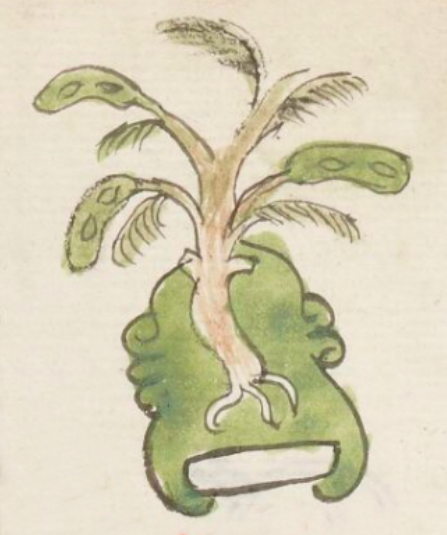huixachin (TR28r)
This element of a tropical tree of the acacia or mimosa family is called the huixachin.
Stephanie Wood
Other glyphs for this huixachin tree, unlike this one, show a great many thorns on the trunk. The presence of so many and such notable spines supports the reading that the Nahuatl root is huitztli (spine, thorn, spike), in combination with achin, "a lot of, many." Gordon Whittaker (Deciphering Aztec Hieroglyphs, 2021, 99) suggests this interpretation. The leaves of the huixachin had a role in the Aztec recipe for black ink. (See: Manuel Orozco y Berra, La civilización azteca, 1988, 125.) Follow this link to see a photo of a "huizache" tree, with its yellow flowers and seed pods.
Stephanie Wood
ca. 1550–1563
Jeff Haskett-Wood
trees, árboles

huixachin, a tropical tree, https://nahuatl.wired-humanities.org/content/huixachin
Telleriano-Remensis Codex, folio 28 recto, MS Mexicain 385, Gallica digital collection, https://gallica.bnf.fr/ark:/12148/btv1b8458267s/f81.item.zoom
The non-commercial reuse of images from the Bibliothèque nationale de France is free as long as the user is in compliance with the legislation in force and provides the citation: “Source gallica.bnf.fr / Bibliothèque nationale de France” or “Source gallica.bnf.fr / BnF.”




